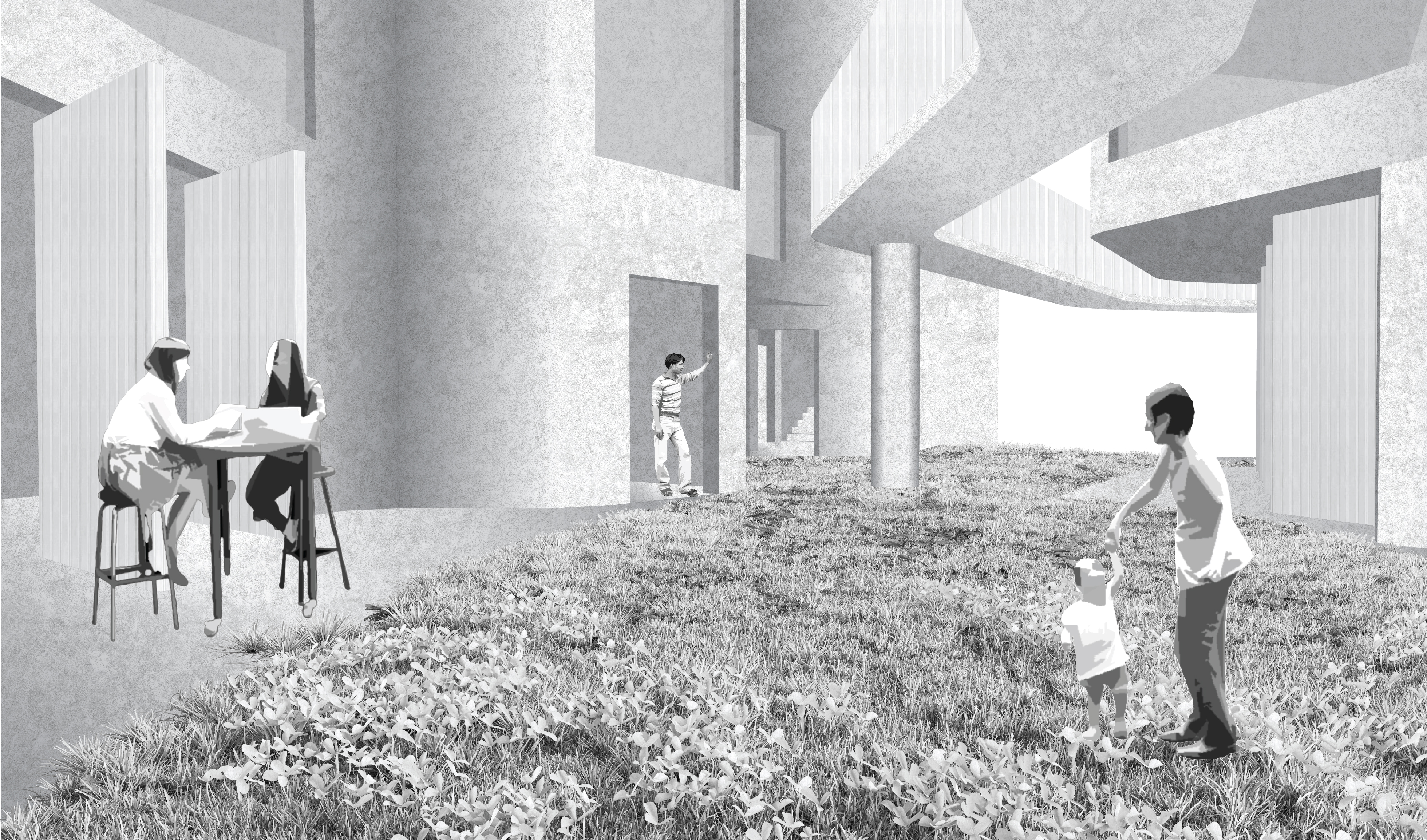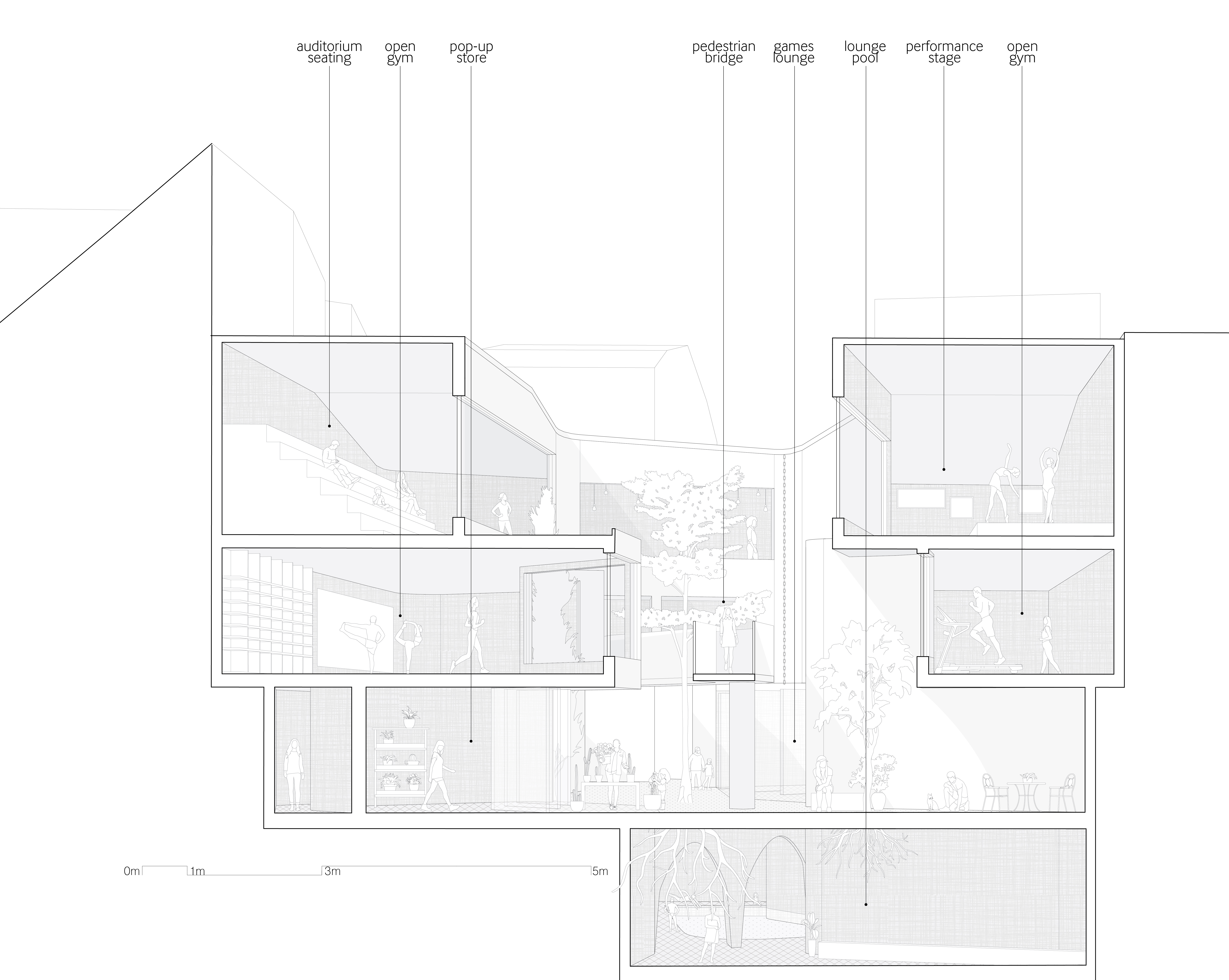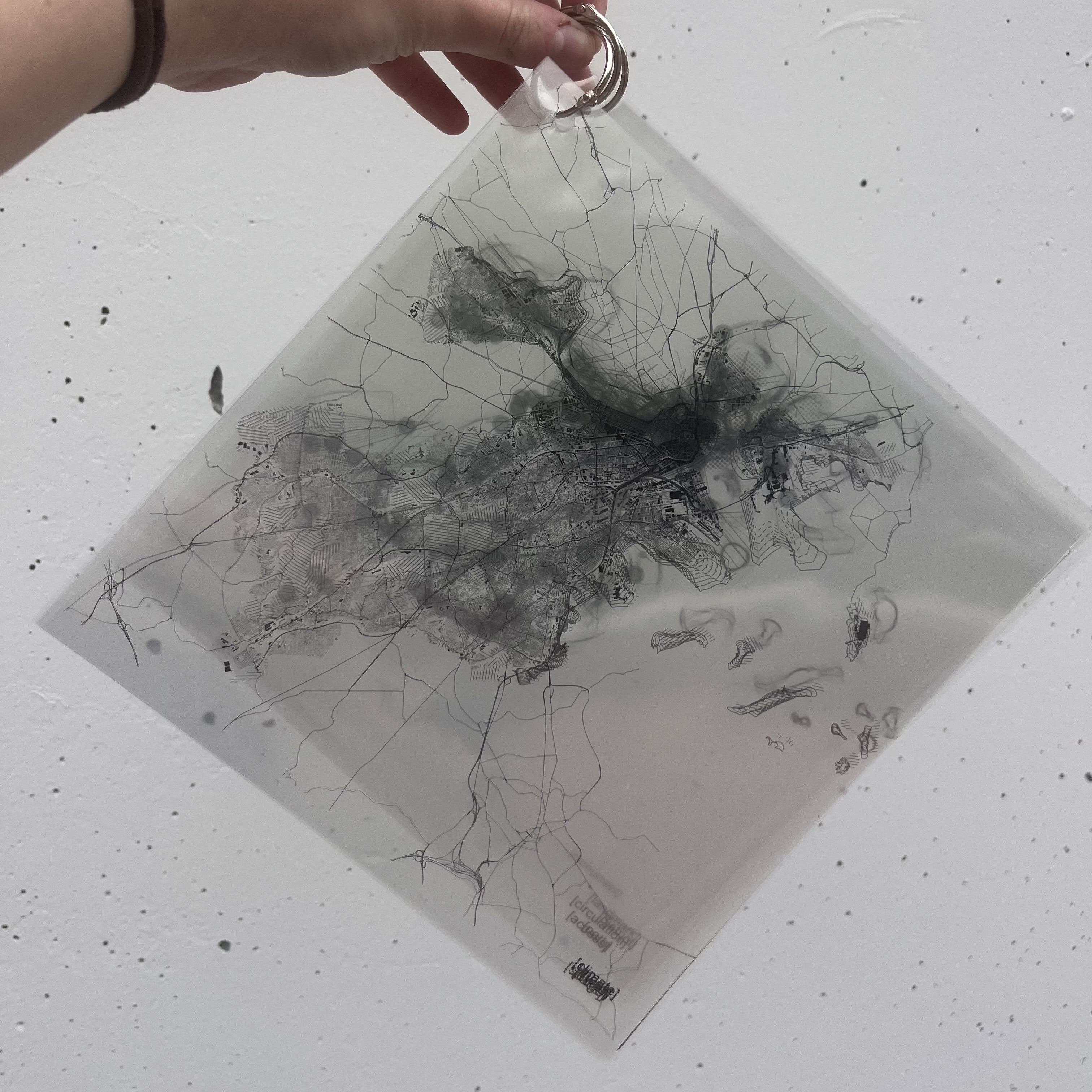
jargon
cartographic theory
program
era
location
mission
era
location
mission
spatial injustice & critical cartography
spring 2023
boston, ma
critical analysis of representation in urban design
spring 2023
boston, ma
critical analysis of representation in urban design
this glossary exists to fill a void in language, both verbal and visual. the fields of architecture and urban planning have tended towards distancing themselves from the people they claim to serve, resulting in a canyon of missing links and connections to the conditions they have created. a critical moment has arisen as the convalescence of many injustices over the modern age, where communication between the urban realm and its people has become a necessity. the urban and the city, innocent on their own, have become purveyors of injustice. reconciling our relationship with the urban condition begins with the way we understand it, and jargon is often a barrier in understanding.
the goal of this investigation is to provide an introductory outlet for linguistic and visual representation in architecture and urban design, especially in relation to the injustices the field tends to perpetuate. as spatial injustices compound, the way we represent them becomes critical. this is an exploration and an invitation, to myself and other participants in space, to critically reflect on the things we are taught to take for granted. nothing in this glossary is to be considered complete or conceptually definitive, but rather should be viewed as a tool.
the glossary is composed of 14 terms under 4 categories. each term and category is given a definition and context within the greater piece. the prose used references historical social injustices and situates these scenarios in relation to the term. there are 10 accompanying maps, each associated to a term. the maps draw data from geographical and spatial sources and blend modes of representation. the maps may be viewed with their linguistic definitions, on their own, or stacked together to incite exploration and tension.




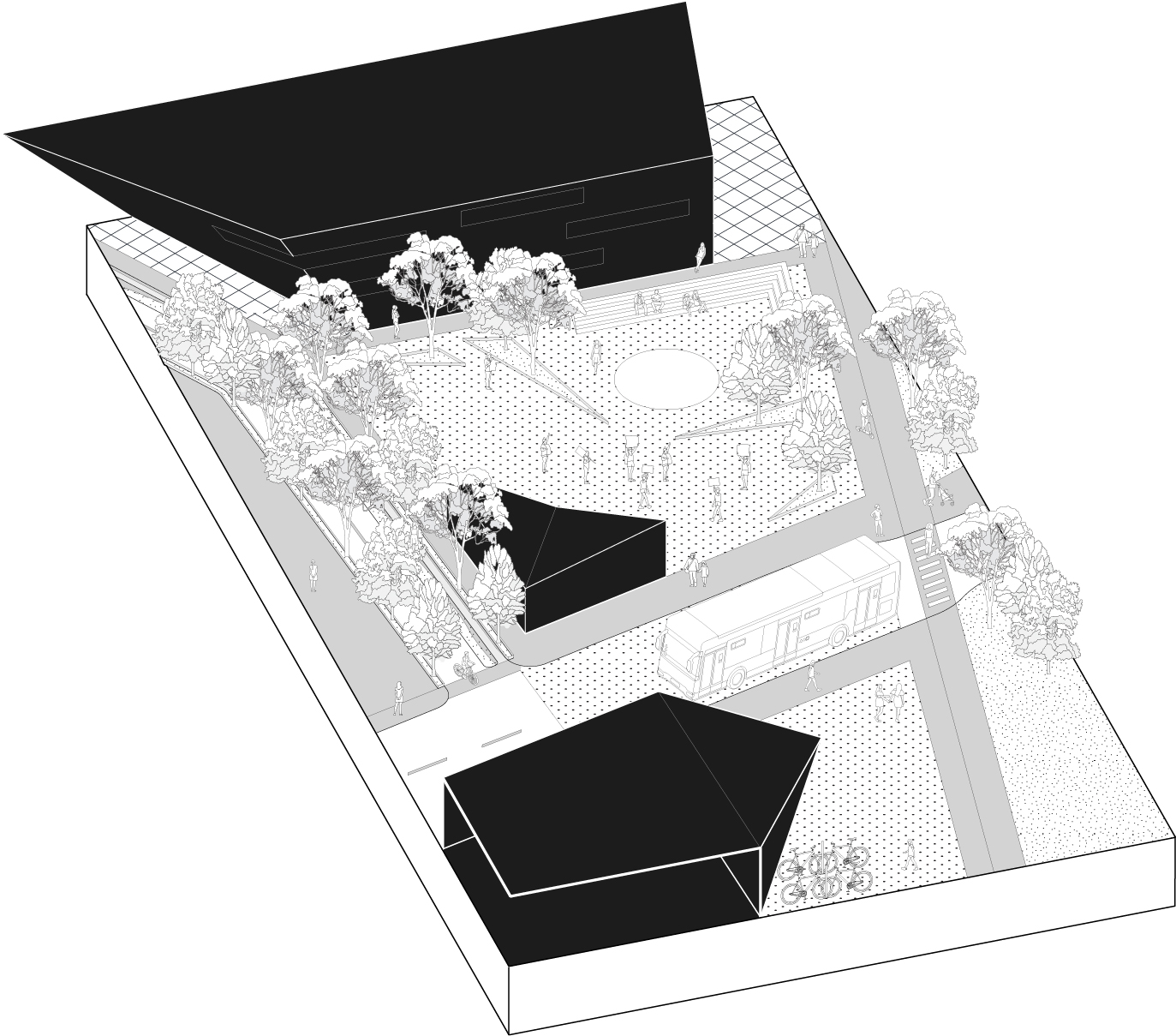

hatch city
urban design studio
program
era
location
mission
era
location
mission
urban design - social housing - accessible education - public library - public transportation - plaza & marketplace - park
fall 2022
mission hill, boston, ma
create a new axis of growth and communication in mission hill
fall 2022
mission hill, boston, ma
create a new axis of growth and communication in mission hill
gentrification and poor urban development have historically plagued boston, and the mission hill neighborhood is no exception. this urban design proposal aims not to change the existing fabric, but expand the patterns intuited from the context into something new.
through a series of imageability studies through maps, the axial nature of the neighborhood becomes clear. the area can be understood by clusters of nodes around these primary axes; tremont street, columbus avenue, and huntington avenue. this framework focuses on creating a new axis of circulation and activity, by creating a fracture in the pattern of the neighborhood and repairing it through creating new spheres of gathering. the spaces that result are flexible and adaptable to infinite typologies and programs, cohesive internally and externally, and create connection through gathering, education, and access to nature.
on either end of the new street axis, dual plazas provide a market space and a headhouse for the roxbury crossing train station. these plazas are linked through an equitable street with a bike lane, drainage bioswale, and wide sidewalks, allowing for easy communication up and down. mixed between these plazas are variable housing typologies, blended through fluctuating block sizes and heights to create space for courtyards, exterior corridors, balconies, and first floor commercial space. these housing blocks change in scale with their surroundings, and step back vertically to maintain pleasant streetfront and courtyard conditions. the stark housing blocks feature townhomes, communal dwellings, and family units, creating a self-sustaining community. the adjacency of these typologies fractures the existing structure of the neighborhood and simultaneously blends them through design.
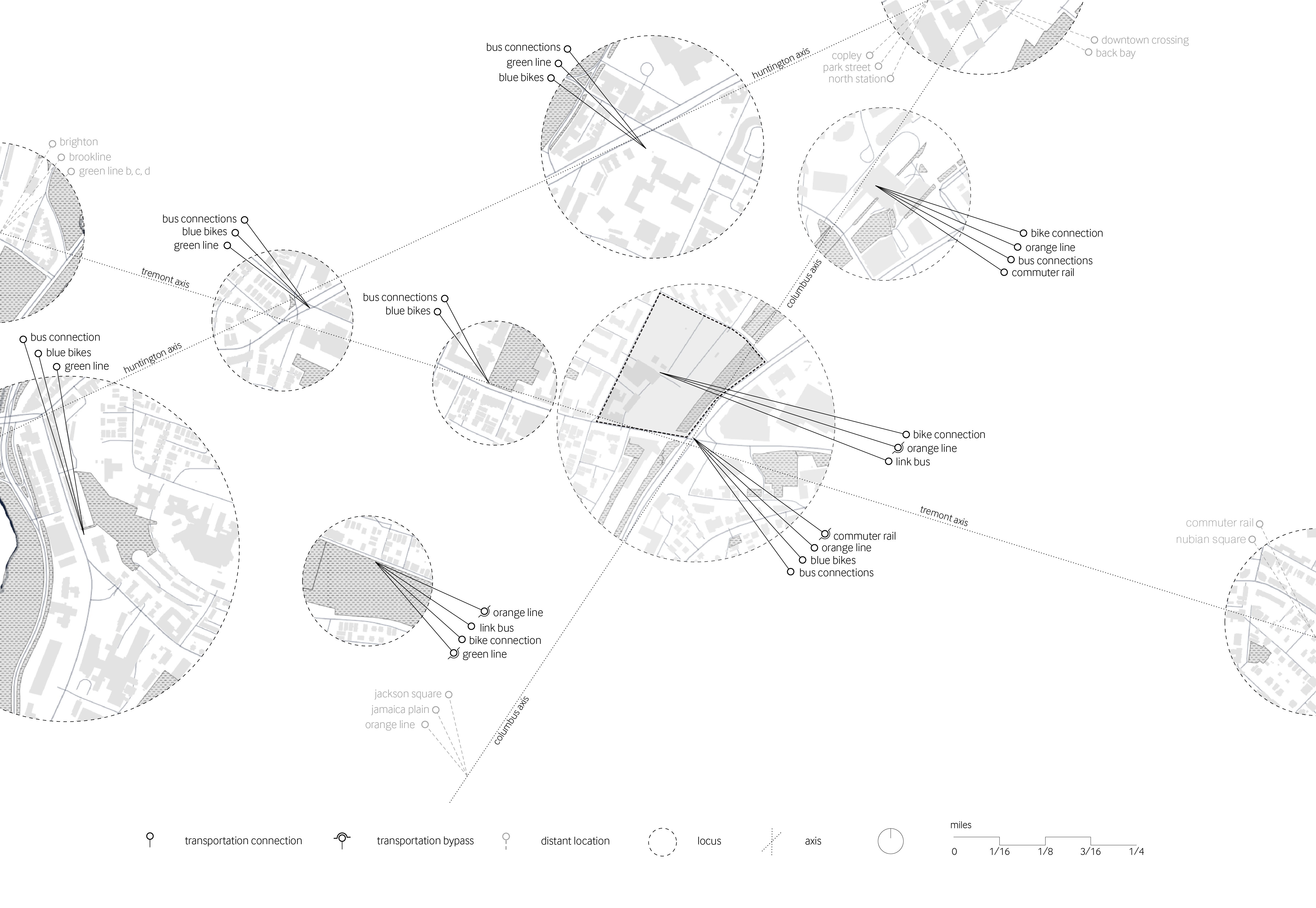

a unique feature of the new street axis is its connection to the existing grid in the mission main housing development. these streets continue into the new block, providing structure for the courtyard apartment buildings, and promptly terminate at their intersection with new street. offset on the opposite side of the road, these streets pick back up and resume the grid pattern. this method reduces the use of these streets for through traffic, and also allows for every other passageway to become pedestrian oriented.
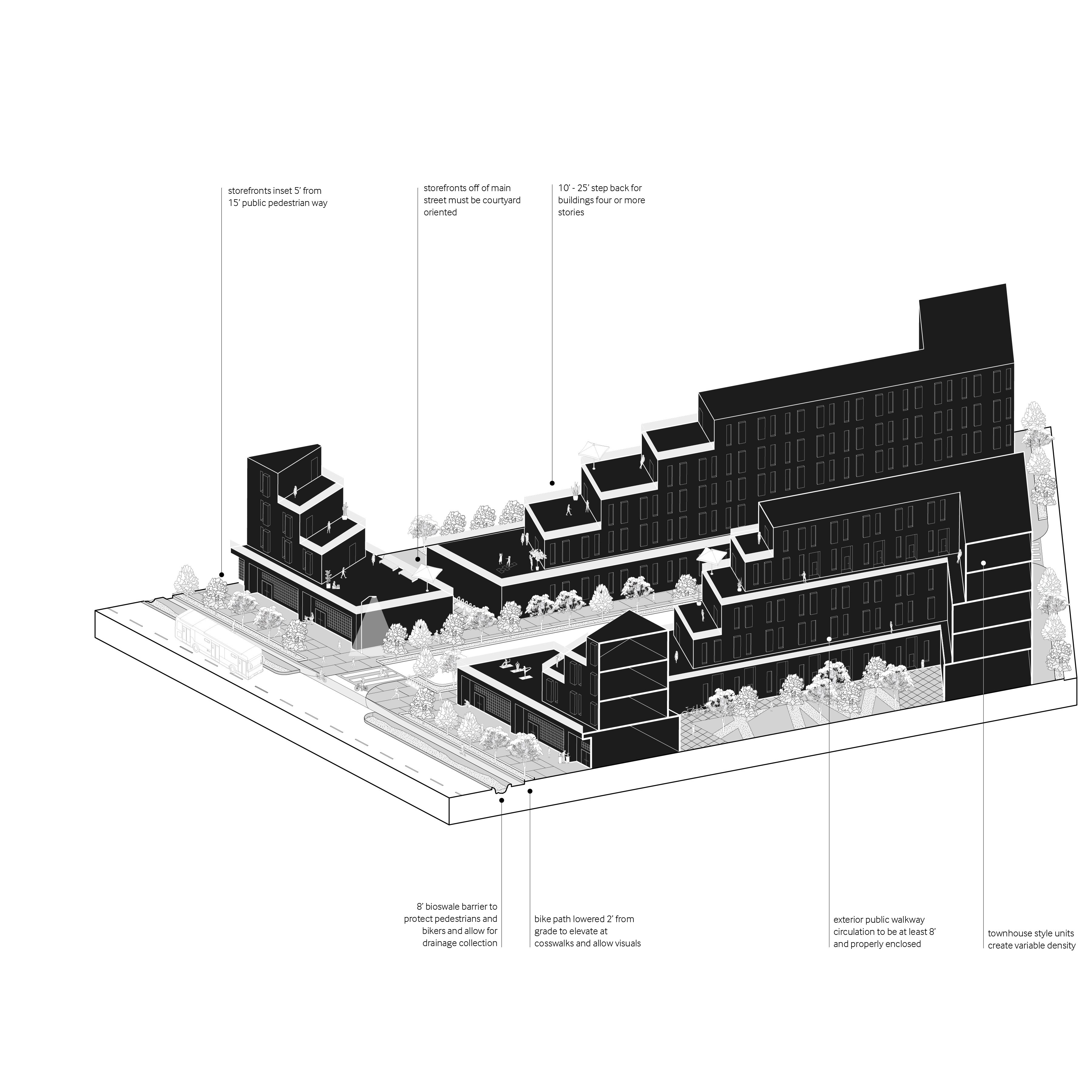


comprehensive design studio
program
era
location
mission
era
location
mission
adaptive reuse - performing arts - plaza & marketplace - makerspace - exhibition
spring 2024
upham’s corner, boston, ma
spring 2024
upham’s corner, boston, ma
throughout its existence, the strand theater and its upkeep have had a direct connection with broader socioeconomic trends in boston and across the country. it has served as a symbol reflecting the privilege of investing in culture, and how much a community physically and emotionally can afford to maintain a space meant for enjoyment and not only economy. the passage of time is felt within the theater through its dilapidation, but also through its resilience. at the moment, the strand is anchored in time, reflective of past success and futilely trying to return. as the neighborhood pushes into the future, the strand must commit to it as well.
through the subtraction of the back parking lot, the strand becomes completely level with the streetfront of columbia road, creating a sheltered plaza space directly off of the thoroughfare. this excavation leaves an elevation change between the ground floor of the plaza and the neighboring residential zone, providing both a buffer in program and a relief.
the new glassy facade with sliding doors provides a direct connection to the plaza, allowing indoor and outdoor space to permeate each other, and for art to be projected onto the facade. users can experience the beautiful interior of the theater and the art taking place within without attending a show or even entering the building. similar connections are cut into the backs of the existing adjacent commercial building, allowing restaurants to have access to seating in the plaza, as well as creating room for a new test kitchen and makerspace in the vacant spaces. all of these programmatic expansions are connected through the plaza and the elevated pavilion space, which guides the user around the new commons and connects to the existing strand through an interior catwalk, creating layers of interaction.

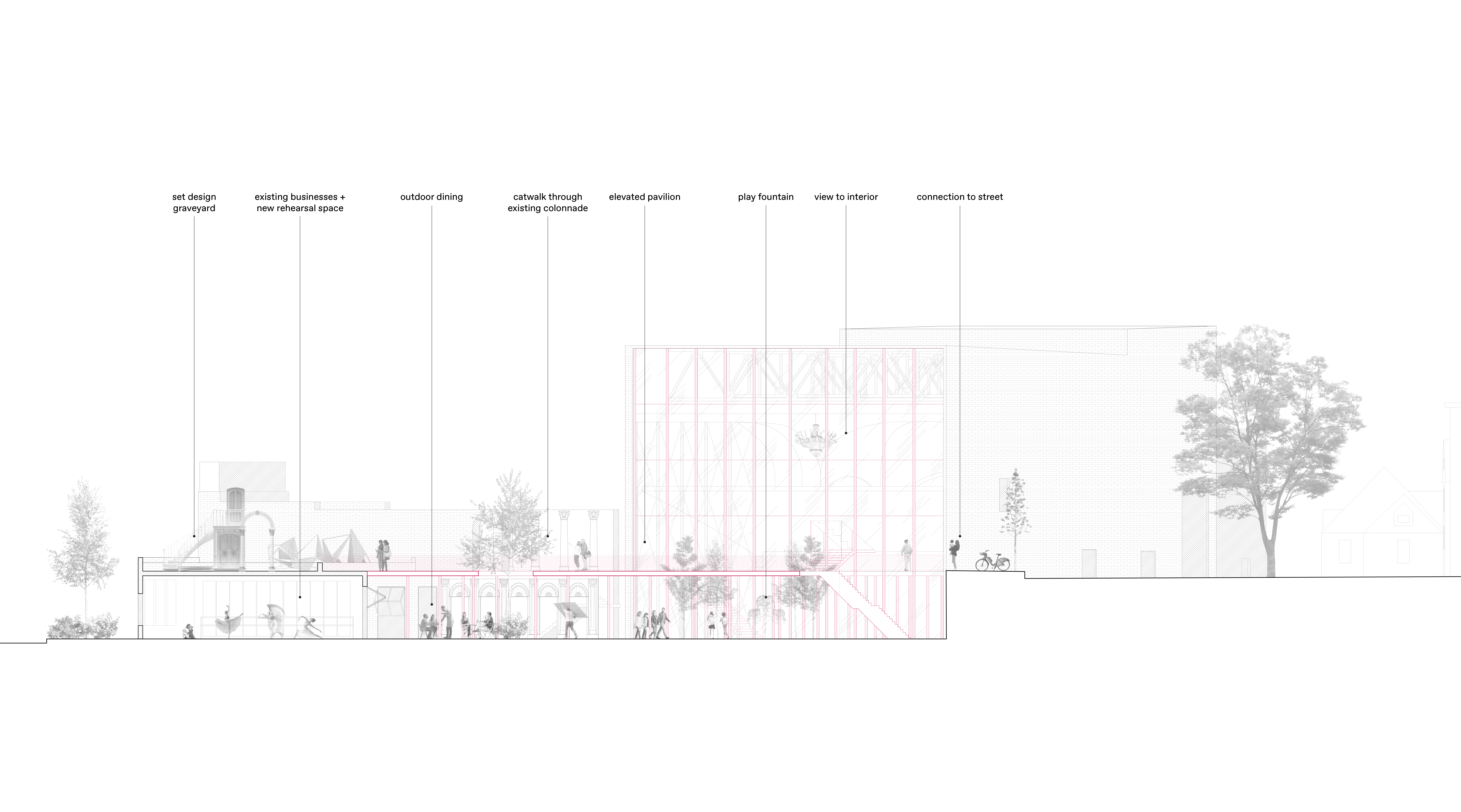





megaflora forest
landscape design studio
program
era
location
mission
era
location
mission
urban installation - landscape design
spring 2023
waterfront, boston, ma
develop new layer of vertical landscape
spring 2023
waterfront, boston, ma
develop new layer of vertical landscape
drawing inspiration from cellular mitosis and parametric design, this vertical forest masterplan utilizes planter columns to add a new layer to boston’s north end while fighting coastal erosion, mitigating urban heat island, and providing amenities. the columns are placed in variable densities and sizes determined by an attractor field of the neighborhood’s hottest areas. the resulting web of modules has three primary functions in the water, on the land, and integrated with human structure.
each module is formed of webbed concrete to reduce carbon footprint and create space for plants and animals to thrive. the tallest and largest planters can be occupied by humans, accessed through puzzles, cable cars, and gymnastics. as they vary in size and height, the planters feature correlating flora and fauna, making each tower the host of a unique ecosystem.
the three typologies of blue, green, and gray correspond to different species of plants and different goals of ecological intervention. the blue towers occupy the water and the harbor, providing a barrier to coastal erosion, as well as valuable homes for native oysters, fish, and aquatic plants. the green towers house a variety of local species of plants, acting as passageways for birds, bees, and butterflies, while simultaneously providing shade to the city. these units occupy a multitude of landscapes, such as the tops of roofs, parks, and roadway medians. the gray planters are placed primarily around heavy infrastructure, such as highways and train stops, and carry hearty plants that can filter pollution and mitigate heat. these units can also house human related amenities such as public restrooms, water fountains, bike racks, and playgrounds.
![]()
![]()
the methodology of the masterplan utilizes qgis data to determine placement of the planters. the blue, green, and gray typologies determine areas with urban heat island effect, high density population, risk of coastal erosion, and pollution, and intervene accordingly. the size of the circle determines the density of the intervention, and the scale of the fill determines the size and height. the masterplan is the seed point for where the planters sprout up, and over time, they expand and contract based on the needs of their immediate environment. the masterplan concept is applicable in any environment, and can sprout up in any city according to its needs. purely fantastical, the structures breathe and expand as they multiply, eventually swallowing the existing urban realm and spawning an infinite web of megaflora structures. each module is formed of webbed concrete to reduce carbon footprint and create space for plants and animals to thrive. the tallest and largest planters can be occupied by humans, accessed through puzzles, cable cars, and gymnastics. as they vary in size and height, the planters feature correlating flora and fauna, making each tower the host of a unique ecosystem.
the three typologies of blue, green, and gray correspond to different species of plants and different goals of ecological intervention. the blue towers occupy the water and the harbor, providing a barrier to coastal erosion, as well as valuable homes for native oysters, fish, and aquatic plants. the green towers house a variety of local species of plants, acting as passageways for birds, bees, and butterflies, while simultaneously providing shade to the city. these units occupy a multitude of landscapes, such as the tops of roofs, parks, and roadway medians. the gray planters are placed primarily around heavy infrastructure, such as highways and train stops, and carry hearty plants that can filter pollution and mitigate heat. these units can also house human related amenities such as public restrooms, water fountains, bike racks, and playgrounds.
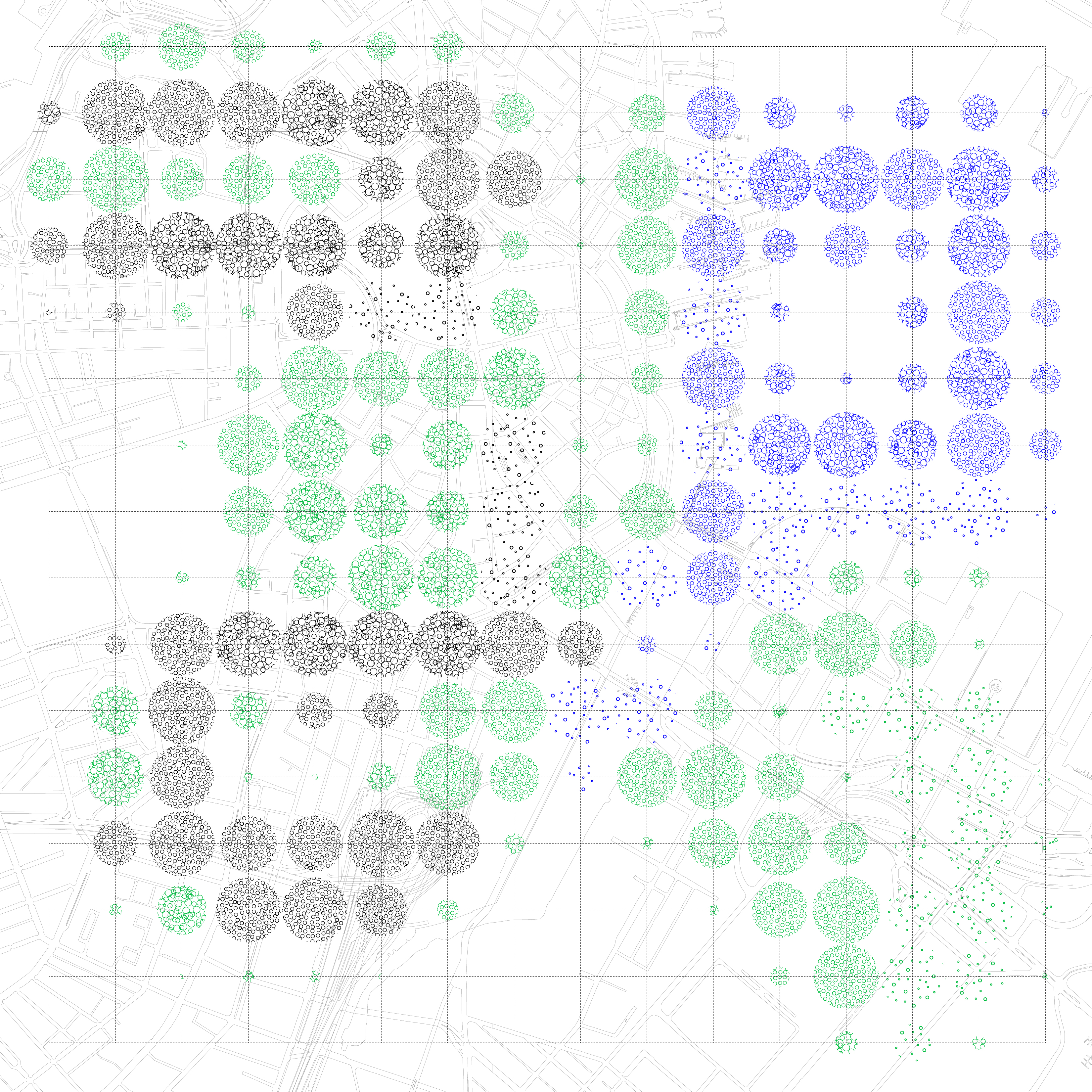



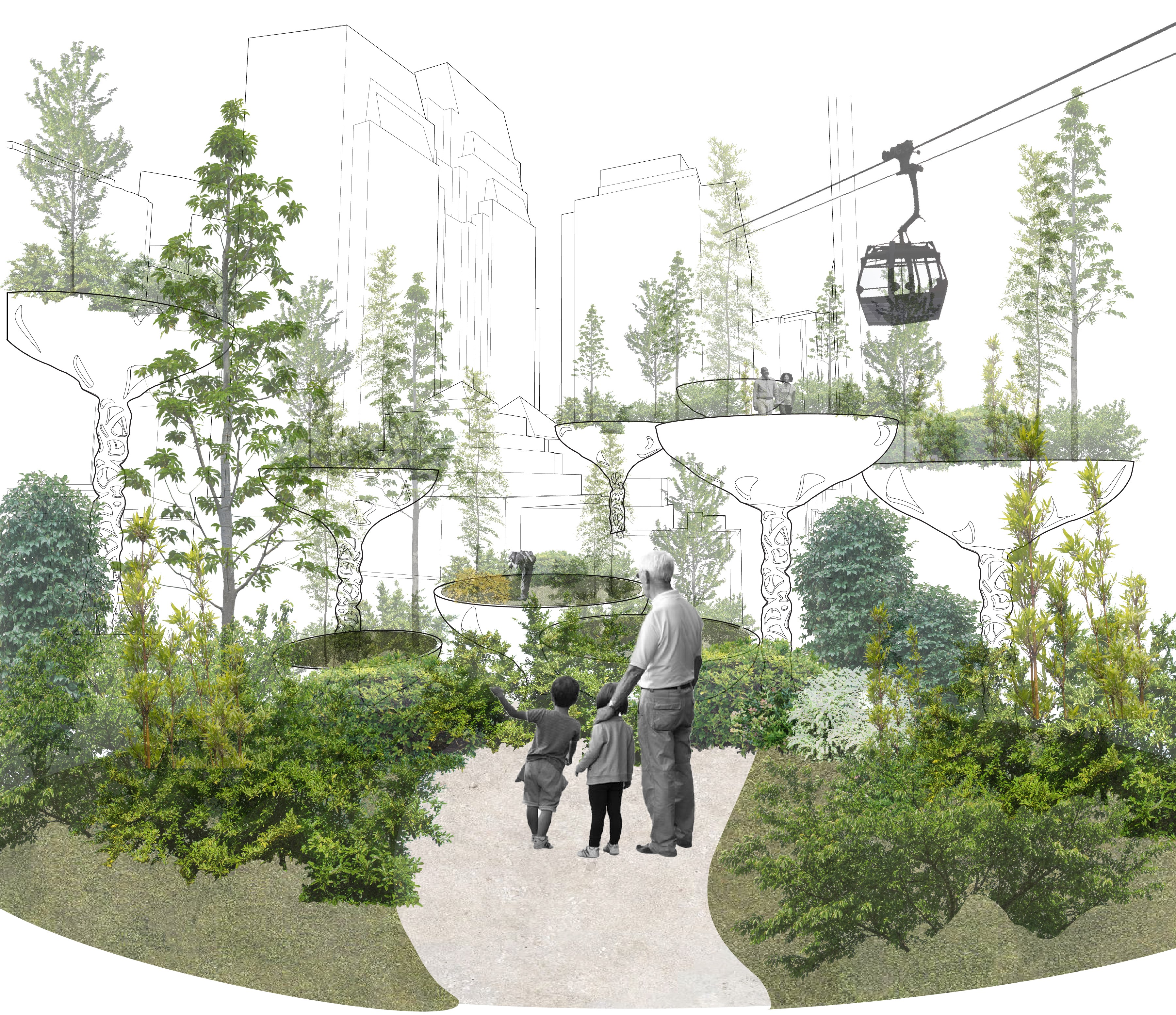

the valley
community center studio
program
era
location
mission
era
location
mission
mixed use - community engagement - theater - park - market - sports - pedestrian bridge
spring 2022
madrid, es
carve a valley of democratic community space
spring 2022
madrid, es
carve a valley of democratic community space
located in a dense block in central madrid, this community center carves a valley of democratic multi-use space. blended into the street through floating brick facades and a pedestrian bridge, this community center provides a meandering path of program and freedom. rather than considering the site as a blank space to be filled, it is better understood as a solid block to be carved into, interpreted as a valley.
the push and pull of the form makes space for a variety of distinct programs, which are open and accessible to the public. meeting rooms, game rooms, rotating market space, a theater, and a gym are blended into the waves of the structure. however, the in-between spaces equally cherished. on the ground floor, a meadow connects the indoor programs, with an elevated pedestrian walkway on the second floor, and a divide between stage and audience on the third floor. this interconnectedness, even through void space, allows communication across levels and programs, spanning the entire valley.
the valley itself is ecologically valuable, as the hot pools of the spa underground feed and water the roots of the native cypress and eucalyptus trees that live above. these trees thrive through the constant utilization of the valley and, through the wind tunnel effect of the structure, spread fresh air throughout the neighborhood. the indoor spaces feature integrated louver windows, allowing for ambient temperature control and ventilation, while the ground floor uses rotating doors that spill out onto the meadow for the same effect. in a heavily paved neighborhood, the valley acts as an ecological refuge, with its form and function inspired by natural phenomena.
![]()
![]()
![]()
the push and pull of the form makes space for a variety of distinct programs, which are open and accessible to the public. meeting rooms, game rooms, rotating market space, a theater, and a gym are blended into the waves of the structure. however, the in-between spaces equally cherished. on the ground floor, a meadow connects the indoor programs, with an elevated pedestrian walkway on the second floor, and a divide between stage and audience on the third floor. this interconnectedness, even through void space, allows communication across levels and programs, spanning the entire valley.
the valley itself is ecologically valuable, as the hot pools of the spa underground feed and water the roots of the native cypress and eucalyptus trees that live above. these trees thrive through the constant utilization of the valley and, through the wind tunnel effect of the structure, spread fresh air throughout the neighborhood. the indoor spaces feature integrated louver windows, allowing for ambient temperature control and ventilation, while the ground floor uses rotating doors that spill out onto the meadow for the same effect. in a heavily paved neighborhood, the valley acts as an ecological refuge, with its form and function inspired by natural phenomena.



